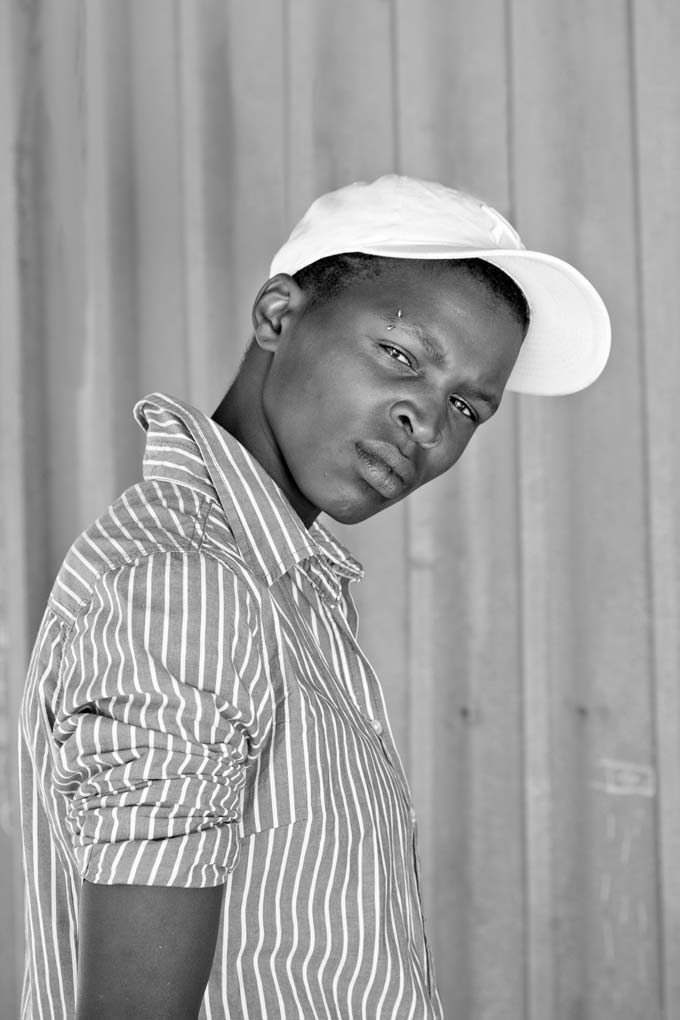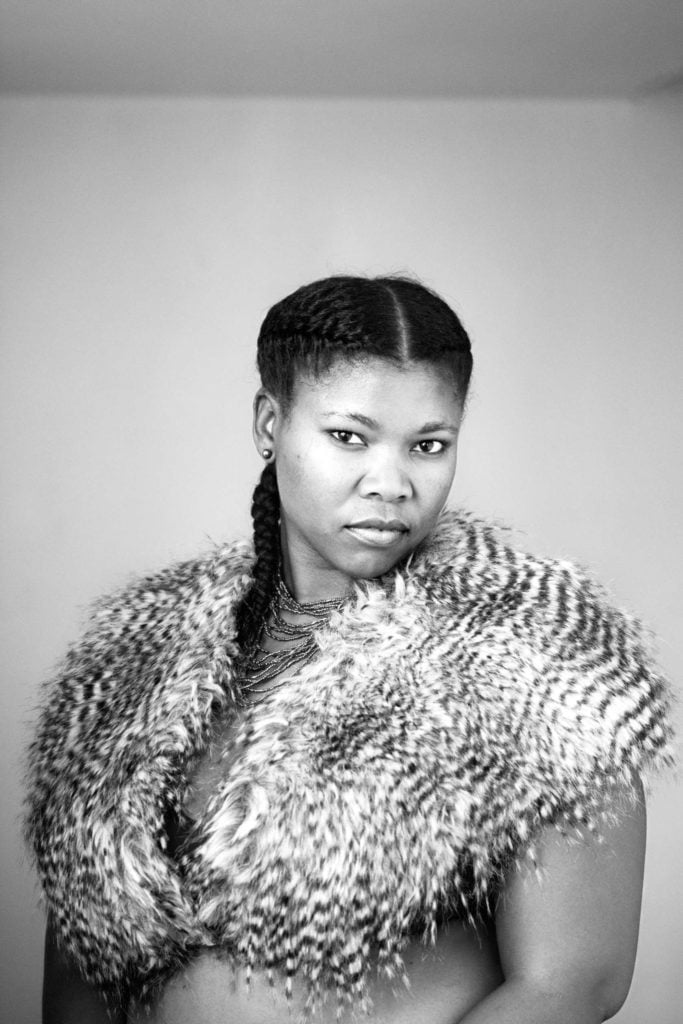Art & Exhibitions
Zanele Muholi’s Heartbreaking Photographs at the Brooklyn Museum Take Stand Against Gay Bashing
The show offers testimonies of “corrective” rape and homophobic violence.

The show offers testimonies of “corrective” rape and homophobic violence.

Christian Viveros-Fauné

“I am an invisible man,” Ralph Ellison wrote in 1952. “I am a man of substance, of flesh and bone, fiber and liquids… I am invisible, understand, simply because people refuse to see me.”
Those words, urgently tweaked by gender and sexual preference, also describe the individual subjects of 87 searing works of photography, video, and installation by South African artist-activist Zanele Muholi, now on view at the Brooklyn Museum. Consisting mainly of portraits of black lesbian women and trans men, Muholi’s images of Africa’s gay outsiders are supported by several pieces of disturbing documentary evidence. Included in this exhibition are harrowing testimonies of wanton discrimination, “corrective” rape, and homophobic violence.
Titled “Zanele Muholi: Isibonelo/Evidence,” Muholi’s exhibition is this artist’s most comprehensive in a U.S. museum to date. The winner of the 2013 Carnegie International Fine Prize and a recent Deutsche Borse Photography Prize nominee, Muholi makes images that bear witness to the ongoing struggles of LGBTI communities throughout the continent.
“Isibonelo” is a Zulu word meaning “example.” Fittingly, the South African shutterbug’s chief lesson is one of artistic forthrightness. Through her frank images and tireless research she has established a visual bulwark that functions as an act of protest, but also as a factual record against a global epidemic of gay bashing.

Zanele Muholi, Ayanda Mqakayi, Nyanga East, Cape Town, 2011 (2011). Gelatin silver photograph, 34 x 24 in. (86.5 x 60.5 cm). © Zanele Muholi.
Photo: Courtesy of Stevenson, Cape Town/Johannesburg and Yancey Richardson, New York.
A self-declared “visual activist,” the artist was trained during the early 2000s at the influential Market Photo Workshop, a Johannesburg institution founded by social documentarian David Goldblatt to provide arts education during the apartheid era. Shortly after leaving, Muholi began making photographs for an online magazine covering African LGBTI issues.
Her first solo exhibition in 2004, “Visual Sexuality: Only Half the Picture,” captured her career in embryonic form: It was devoted, as all her work has been since, to bringing visibility to an underrepresented group. The subsequent display of her work at museums like the CCA Lagos in Nigeria and Kunsthalle Wien, and at biennials in Venice and Sao Paulo, announced the arrival of a formidable talent—it also launched her career as a global human rights activist.
Though South Africa’s 1996 constitution was the first in the world to abolish discrimination on the basis of sexual orientation, and the country was the first on the continent (and the fifth globally) to legalize same-sex marriage in 2006, formal legal protections have had seemingly little effect on the widespread bigotry that is consistently directed at lesbians, gays, bisexuals, and transgender people in that African nation. As a result, LGBTI individuals there remain frequent targets of vicious hate crimes. One such target was Muholi’s friend, the poet and activist Busisiwe Sigasa. The victim of a uniquely brutal practice—the rape of lesbians and gay men to “cure” them of their sexual orientation—Sigasa died eight months after being photographed by Muholi from AIDS she’d contracted as a result of her violation.
The first in an ongoing series of portraits Muholi later titled “Faces and Phases,” Sigasa’s photograph was followed by hundreds of others; the images were subsequently grouped together to counteract the silence and alienation facelessness breeds. The project—which was featured at both the 55th Venice Biennale and dOCUMENTA 13—is currently represented at the Brooklyn Museum by 60 unstintingly candid black-and-white pictures.
Arrayed in three rows along two long gallery walls, the artist presents black faces and bodies where statistics sometimes offer guarded anonymity. Posed casually and with no evident fear, Muholi’s subjects stare directly at the camera. They don’t so much defy the viewer, as confront his or her stubbornly unexamined preconceptions about gender, sexuality, and race.

Zanele Muholi, Charmain Carroll, Parktown, Johannesburg (2013). © Zanele Muholi.
Photo: Courtesy of Stevenson, Cape Town/Johannesburg and Yancey Richardson, New York.
Though all the artist’s photos were shot and printed in the same vertical format, several—like Bakhambile Skhosana, Natalspruit, 2010—feature clashing dress and backgrounds that recall the studio work of other African photographers, like Seydou Keïta and Malick Sidibé. Other portraits rely more on the sitter’s own chosen costume and distinguishing traits: These include a priest’s collar, bold stares, and prominent lip piercings. Yet all of the artist’s pictures make a strong case for their subjects’ hard-fought individualities. Titled using the sitter’s name, the place where the photo was taken, and the year it was shot, each photograph forcefully establishes a separate personality, relegating the common facts of victimhood to a secondary plane—at least momentarily.
Other works on view in Zanele Muholi’s exhibition include Being Scene, a video playing on a monitor that reproduces a blurred version of the artist and her lover having sex, as well a group of giddy color photos documenting gay unions the artist has simply pegged “The Wedding Series.” But few images in Muholi’s startling show stack up to the act of witness contained in her survivor portraits, and the related personal narratives the artist has chalked onto a wall-sized blackboard: “I was raped by my cousin,” reads the story of one lesbian survivor bluntly. “Later that cousin came and told me that he was HIV positive, and that he raped me on purpose.”
Muholi’s portraits are among the few life-affirming rejoinders to that and similar stories.